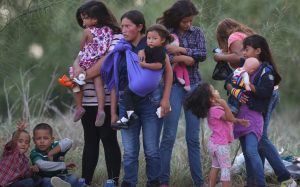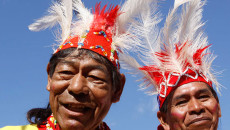By Janett Chavarry Garcia

PERU:Since the new Peruvian government took office, some Peruvians have been asking what route will Peru follow.
As it is, the economy is growing, more businesses are netting profits, we signed the Free Trade Agreement (TLC) with the United States that will benefit our agriculture and export sectors, especially in positioning new and original Peruvian products on the open markets around the world.
Yet, in respect to the agreement, corruption still exists in Peru. Fujimori’s trial continues, capturing the attention of thousands of people. And the corruption, which is at the center of it, proves it is still a difficult point in Peru to combat.
Police, public prosecutors and the justice department are all accused of corruption, especially those related to drug trafficking and the sale of influences to obtain or win trials or benefits.
This government, which is almost in its second year, has so far shown stability and self-control, but in my country we have a phrase that reflects this moment in time in my country: Outside flowers and inside earthquakes.
It means that you can reflect positive and good things around you but when alone, your life is like a castle of cards. I think this is the feeling that millions of Peruvians feel about the social conflicts that are increasing in Peru.
In only the first two months of 2008, the Peruvian Parliament approved a controversial law that permits developments and restaurants around archaeological places. The ruling has stirred some Peruvian regions to fight the ruling with strikes.

Recently, the people of Cusco, Peru, home to Machu Picchu, the principal tourist attraction of the country, and one of the regions where this law would go into effect, went on a hard strike to protest the law.
These Peruvians are not the only ones protesting.
Several days ago, a big group of farmers got together to protest the prices and the benefits that the government grants them because they are not enough to cover their needs.
It is a situation that has left the farmers in the different regions with a less quantity of food, especially in the capital, Lima. At this moment, our police are controlling all the disturbances that are concentrated in the north of Peru.

Indigenous people of Machu Picchu protest the new government ruling allowing restaurants and land development near archaeological sites.
Another point that needs attention is the fact that more than eight million children will return to school on March 3, 2008. Some of them come from the areas hardest hit by the earthquake that destroyed thousands of houses and schools.
These buildings haven’t been repaired yet. As a result, education happening in these places is not a guarantee with either the safety of the building called into question or with available qualified teachers.
Right now, much discussion and protests around the country are happening over a controversial rule requiring new teachers to have graduated with good marks while studying at university or institute.
The rule has never been applied and public schools have instead recognized a good teacher by his experience and number of degrees. Yet, the education department says the rule guarantees the qualities of a good teacher.
The only problem is that in my country to study to become a teacher is the most popular profession, especially in regions outside the capital. Consequently, we have a lot of teachers, not always well qualified but these teachers accept positions in some of the more difficult places in the country where other languages are in use or severe conditions exist.
If the rule goes into effect, these much-needed teachers may lose their jobs and many children who need them could be left without a teacher.
As these internal crisis face Peru, I find myself asking the same question as my fellow Peruvians: Where is Peru heading?
The government while proving adept at handling some issues cannot relieve people’s feelings of dissatisfaction with an economy that is good but where salaries and benefits have stayed the same while food prices and needs have increased.
I think some of the country’s problems are due to Peru’s lack of good leaders, especially women, and the lack of effective communication between the government and the people.
I’m convinced that without clear rules and correct information at the right moments, the Peruvian people cannot collaborate with the government in taking the country forward.
In two months, Peru will be the venue for an important meeting of world leaders — the APEC (Cooperation Association Pacific- Asia). The government is focused on showcasing Peru’s potential to the world during this time.
We hope we truly can concentrate on our future and the crisis we have now in the country can be overcome. Otherwise, these unhappy events will be seen as an indication of more problems coming soon — and that is a route we do not want to follow.
Learn more about Janett:
Janett Chávarry GarcÃa was born in Lima, Peru in 1977. It is where she still lives with her parents and three sisters in the same apartment near the city’s town square.
Janett has a degree in Communications from Lima University. These days, Janett studies the development of communications and mass media as it pertains to social issues.
As such, she has worked in human resources, television and has participated in public enterprise projects.
When Janett is not writing for Latina Lista, she loves to spend her free time either curled up with a good book of fiction and her dogs or working in a little exercise by playing volleyball or cycling around Lima.




